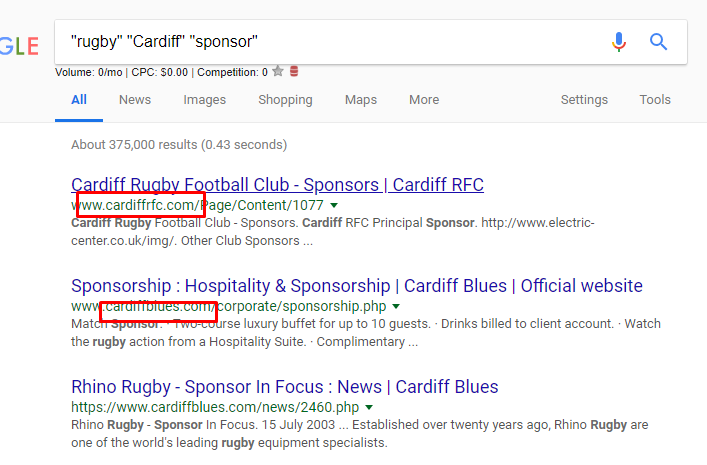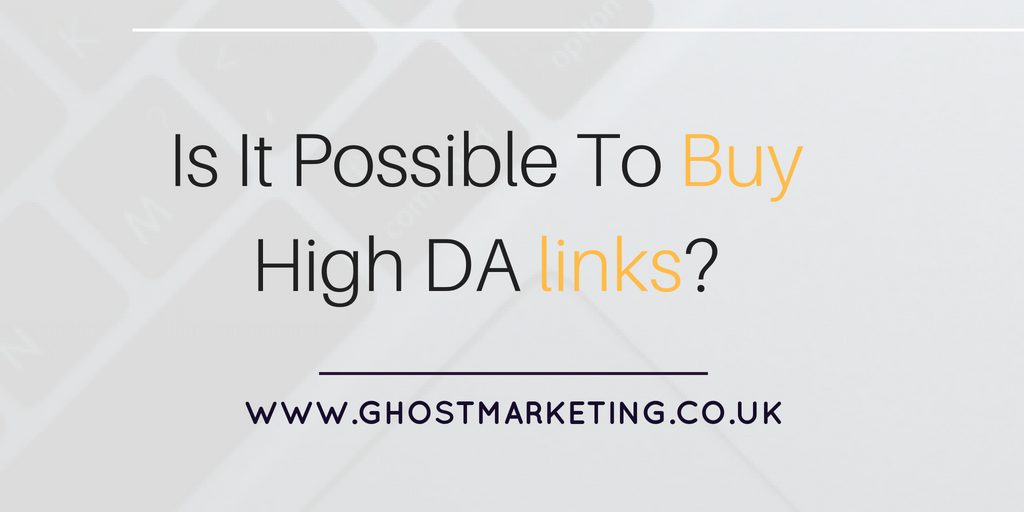We all know that “buying links” is against Google’s terms of service, and if you are seen doing this you will receive a penalty…. (Although this isn’t entirely true, but that’s a post for another day.)
But is it possible to get around this using some creative strategies?
The short answer is yes.
Money talks, especially in business and marketing. We can leverage creative strategies (and money) and build links that are not only safe in the eyes of Google but also build them very very quickly too.
Contents
What Is “DA” Or A High DA Link?
DA stands for domain authority and is essentially a metric that determines the quality of a backlink.
There are hundreds of variations of domain authority to calculate the value of a link, but a term used a lot in the industry is domain authority, so for the purpose of this article, we’ll keep with this terminology, although remember that Google doesn’t look at domain authority as a ranking metric! They have their own metrics which, years and years ago used to be called PageRank but that’s been dead for years. They’ll still have some kind of internal metric that the algorithm uses to determine link quality, there is just no official name for this anymore and we cannot see it for each individual site (dam).
Who Cares About DA?
We get a lot of leads into Ghost Marketing that are looking for specific DA metric links to be built. This is a problem for a couple of reasons.
Although DA is a great general indicator for the quality of the link, it’s actually very poor at determining whether said link will move the organic ranking needle or not. Domain authority is a metric created by third party SEO tools, such as Ahrefs, Majestic, Moz, SEMrush and pretty much any other software provider that needs to “rank” or “rate” the value of a link.
The problem with this is obvious, these sites are not Google. Google has an almost unlimited budget to crawl the web and as a result there are millions of webpages Google crawls that these other crawlers simply do not have the budget (or desire) to crawl. This is one of the reasons these metrics are slightly unreliable, especially when you are looking into smaller sites or niches.

Remember relevancy is still king. As a result looking directly at DA or DR, TR, or any other abbreviation that a third party has built to determine the quality of a link is simply an unreliable way to measure website quality. You may determine a site is not “worth” generating a link from as it’s DA is below a certain amount… The issue with this is 2 fold.
1.) The site may grow in popularity in the future, meaning this DA in 2 months might be in your “zone of targeting” but now might be much more difficult or expensive to generate.
2.) Relevancy is more important. Generate links that are relevant regardless of the power of the website…
Of course it’s important to remember not to use a lot of internal resources to generate links from sources that won’t move the organic ranking needle as much. But relevancy is that powerful that 10 links from relevant sources across the course of a couple of months can move the needle so much (it’s scary.)
4 Strategies To “Buy High DA Links” Whilst Looking Natural
1.) Sponsoring Teams/Events/Clubs
A very common advertising and marketing tactic in general. Something that’s been done for years and will likely be done for years to come.
From a link building point of view and an emphasis on generating high quality backlinks to your site, we can implement this strategy very easily and I recommend this especially for a local business looking to generate locationally relevant links, which in many cases can be very tough to generate.
The strategy simply involves finding and reaching out to teams, sports clubs, music clubs, event venues, events themselves and pretty much anything that has or allows sponsors.
But take this one step further and look for the best links (ideally on the homepage) that are dofollow. Note: officially these should be nofollow links, but it’s very unlikely these communities will do this as they know the dofollow link adds value to their offering.
How To Find These?
Search “Keyword/Niche” “Sponsors” (And a location if relevant) into Google.
You’ll find thousands of potential sponsorship pages, also remember to replace “sponsors” with “sponsorship” or “contributors” add other synonyms.

Also remember if you are on a budget, change the sport to a less popular one or even sponsor a junior team only instead.
Story: When Ghost Marketing was launched, it was actually based in Salisbury, UK (Now we’re based in Central Cardiff.) As Salisbury doesn’t exactly have a lot of local bloggers, building locationally relevant links is very difficult. We sponsored Salisbury rugby club (salisburyrfc.org) for £200/year…. Getting a DR17, hyper locational relevant link to our site. We instantly went into 1st position for SEO Salisbury after this link was live….
![]()
2.) Sponsored Posts/Guest Posts
A very simple strategy that involves finding relevant websites that have guest or sponsored post options. Guest posts are the ideal scenario as these are free (aside from the content costs associated), but large editorial websites tend to know the value of links and hence will usually charge an “editorial fee” for posts. This can be anywhere from £50 to £5,000 depending on the quality of the site. We all know what’s going on here but this is also why this is called an editorial fee and not a “buy links on our website” fee. It enables posts to go live that are “non sponsored” but the website still gets paid. It’s a win-win… To a link building company anyway!

 3.) Paying link building agencies/PR agencies
3.) Paying link building agencies/PR agencies
Isn’t this just buying links? Just one step removed…..
Anyway, if we glance over the fact that this is link building inception in action. Digital PR agencies and link building companies (such as ourselves) calculate success as the number of high quality links built for clients.
Without getting to in-depth, this is essentially paid link building that companies of all sizes can get away with. What’s even better is these same companies can mitigate their risk further by playing the blame card if anything were actually to be picked up…
 4.) Blogger/Influencer Reviews
4.) Blogger/Influencer Reviews
One of my favourite link building strategies for larger Ecommerce clients. This involved finding and reaching out to micro influencers and bloggers in your industry. For example if we have a gothic fashion client and reach out to 100 gothic bloggers offering to send them a free product in return for a review on their blog (potentially a video and social posts too) this is influencer marketing at it’s finest. What’s a very nice added element is we generate tons of highly relevant links to our clients. This can even be free too if the bloggers don’t charge for reviews. Image from Wordtracker.
Conclusion
Remember using all of these strategies or whenever any trading money in return for a link is in action, the linking party is meant to add a nofollow tag to each link because it has been “incentivised.” But as you can see from just the 4 strategies above, it’s not very difficult to get around these issues if you use a bit of creativity and have a bit of money to spend as well. The key, as with everything in marketing and digital marketing is to build out a concrete value exchange.

